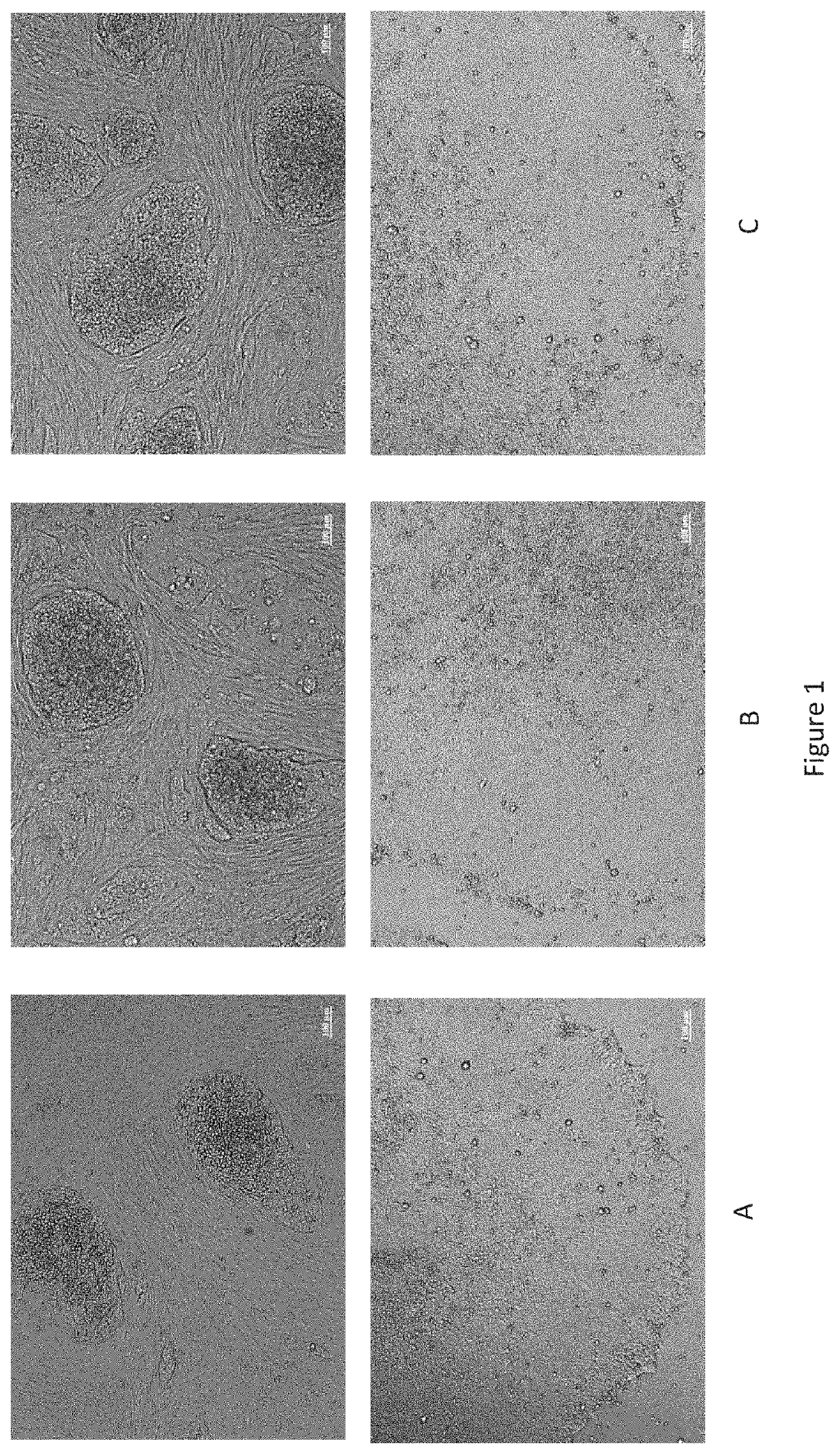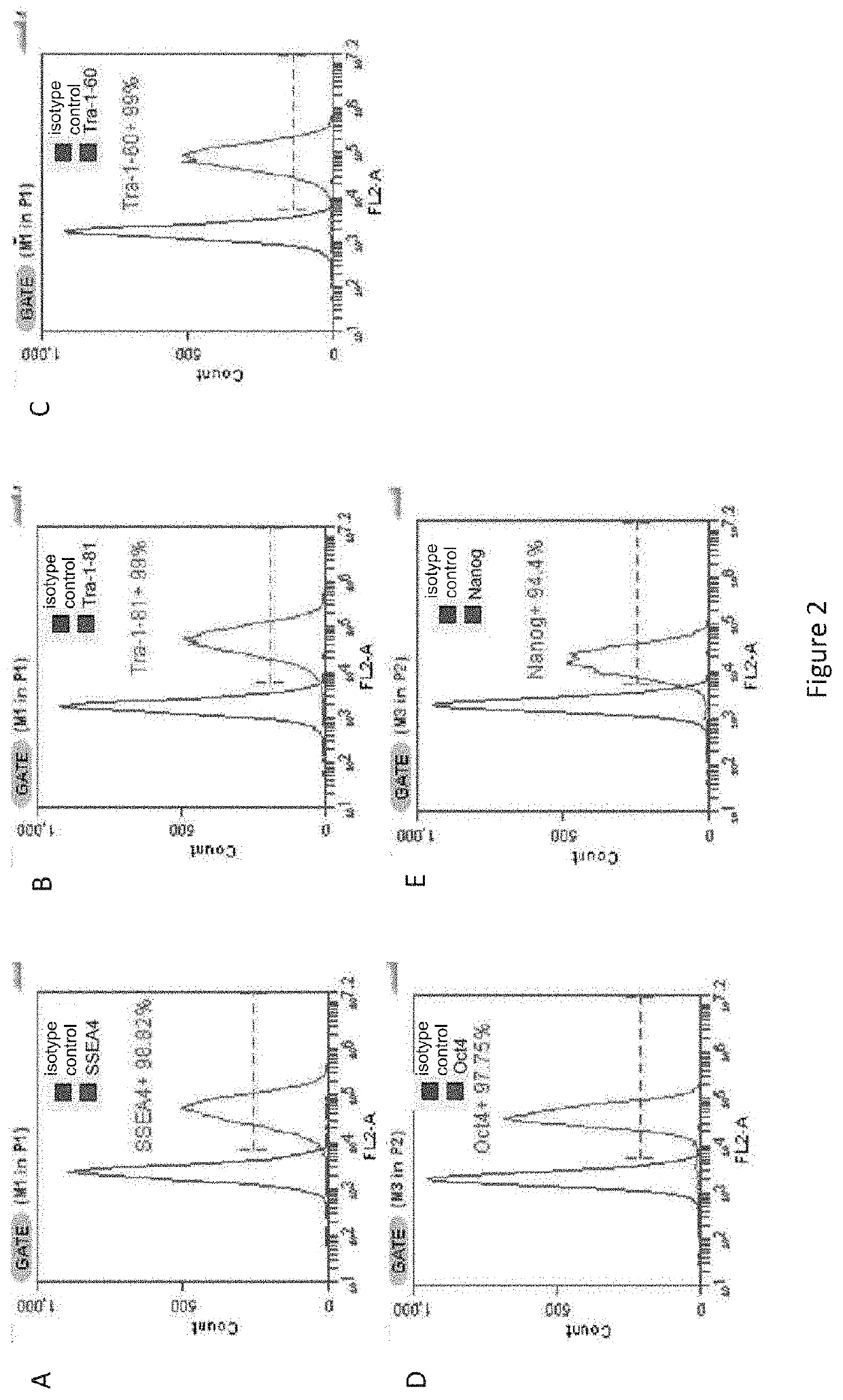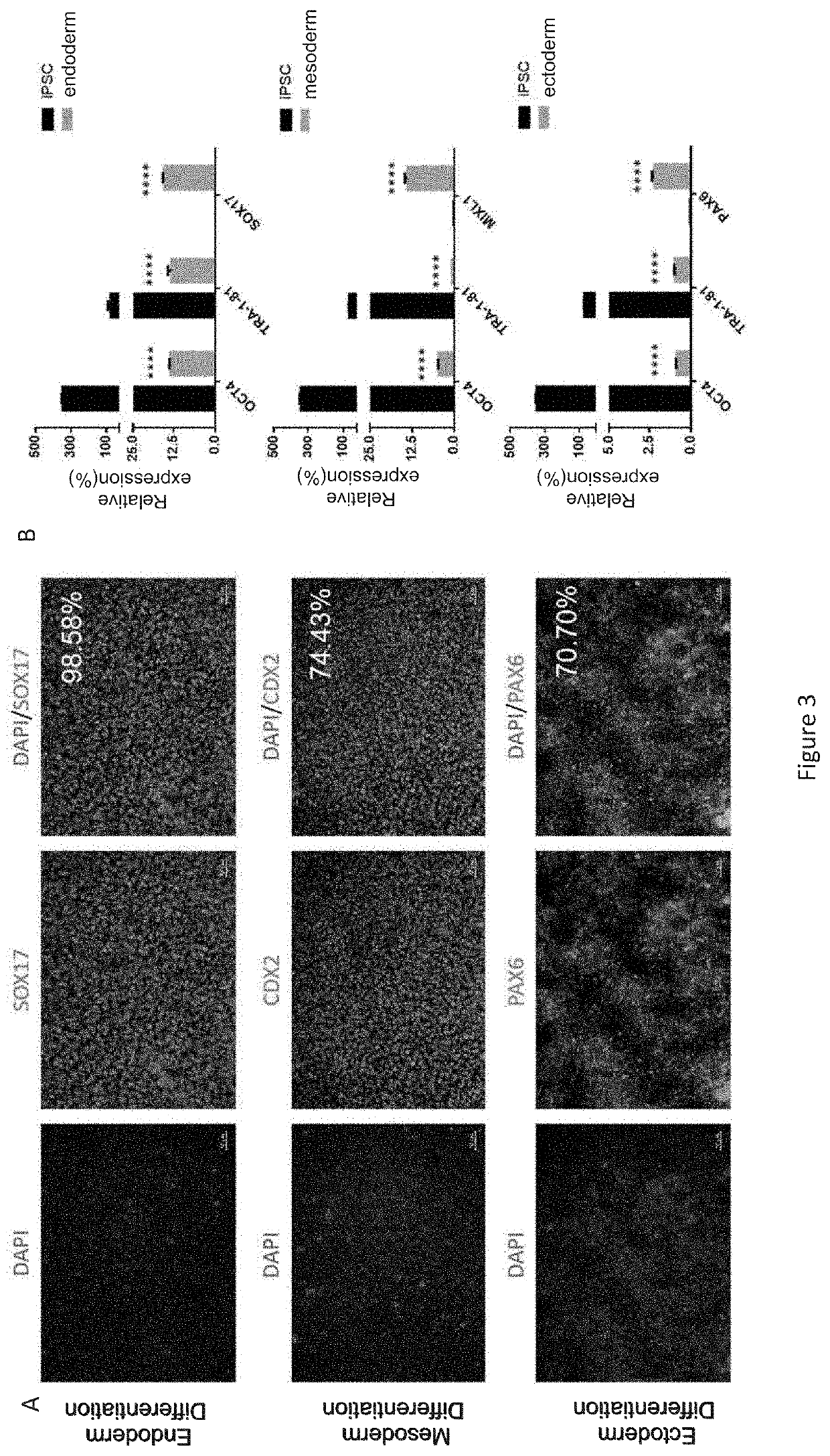Method for preparing induced pluripotent stem cells by reprogramming somatic cells
- Summary
- Abstract
- Description
- Claims
- Application Information
AI Technical Summary
Problems solved by technology
Method used
Image
Examples
example 1
the Reprogramming of Skin Cells by Using a Vector Encoding Reprogramming Factors
[0042]1.1 Human-derived skin tissue was placed into a petri dish, and was quickly and repeatedly rinsed for 4 times with phosphate buffered saline (PBS) pre-cooled at 4° C.
[0043]1.2 The skin tissue was processed with sterilized ophthalmic scissors and a scalpel to remove the subcutaneous white fat, remove the epidermis and subcutaneous tissue, and leave the dermis layer to obtain pretreated skin tissues. The pretreated skin tissue was transferred in the medium, and cut into small pieces to obtain skin tissue pieces with neat edges.
[0044]1.3 3 mL of fetal bovine serum (FBS) was evenly added to each well of a 6-well cell culture plate. The skin tissue pieces were added and incubated in the incubator for 0.5-1 h to make the tissues adhere to the bottom of the culture plate.
[0045]1.4 1 mL of DMEM (Gibco) medium comprising 20% (v / v) FBS was added to each well of the 6-well cell culture plate, and the plate wa...
example 2
the Reprogramming of Skin Cells by Using a Vector Encoding Reprogramming Factors
[0054]The same protocol was used as described in steps 1.1-1.9 of Example 1. Fibroblasts derived from human skin tissue were used for conducting the method of the present invention. As compared to Example 1, the construction of the reprogramming vector in step 1.8 is different. On the basis of the construct of Example 1, EBNA1 and OriP elements were added, so that the replication efficiency of the plasmid could be enhanced in somatic cells based on the EBNA1 / OriP system. The construction method is described in detail as follows.
[0055]① Using plasmid (Addgen#20922) as the template, KOD-Plus-Neo (TOYOBO #KOD-401) high-fidelity enzyme and primers F5 / R5, F6 / R6, F7 / R7, F8 / R8, F9 / R9 were used to perform the amplification, resulting in the fragment of EF-1α promoter, Oct4 coding sequence, Nanog coding sequence, EBNA1 coding sequence and OriP sequence, respectively (see Table 1 below for the primer sequences and...
example 3
the Reprogramming of Skin Cells by Using a Virus Comprising RNAs of Reprogramming-Inducing Factors
[0057]The same protocol was used as described in steps 1.1-1.6 of Example 1. Fibroblasts derived from human skin tissue were used for conducting the method of the present invention. Different from steps 1.7-1.9 of Example 1, reprogramming of iPSCs was performed by using a virus comprising RNAs of reprogramming-inducing factors as described in step 3.7 below.
[0058]3.7 When the second-generation skin fibroblasts reached 80%-90% confluence, Sendai Virus comprising Oct4 and Nanog reprogramming-inducing factors was mixed with the cells and cultured for 2 days. The medium was discarded. 2 mL of DMEM medium with 20% (v / v) FBS was added to culture, and the medium was changed every other day. After culturing for 5 days, 1 mL of 0.25% trypsin-EDTA (GIBCO) was added, followed by culture in a cell incubator for about 4˜6 min. When the cells became round, detached and floated, they were added to Vit...
PUM
| Property | Measurement | Unit |
|---|---|---|
| Molar density | aaaaa | aaaaa |
| Molar density | aaaaa | aaaaa |
| Molar density | aaaaa | aaaaa |
Abstract
Description
Claims
Application Information
 Login to View More
Login to View More - R&D
- Intellectual Property
- Life Sciences
- Materials
- Tech Scout
- Unparalleled Data Quality
- Higher Quality Content
- 60% Fewer Hallucinations
Browse by: Latest US Patents, China's latest patents, Technical Efficacy Thesaurus, Application Domain, Technology Topic, Popular Technical Reports.
© 2025 PatSnap. All rights reserved.Legal|Privacy policy|Modern Slavery Act Transparency Statement|Sitemap|About US| Contact US: help@patsnap.com



